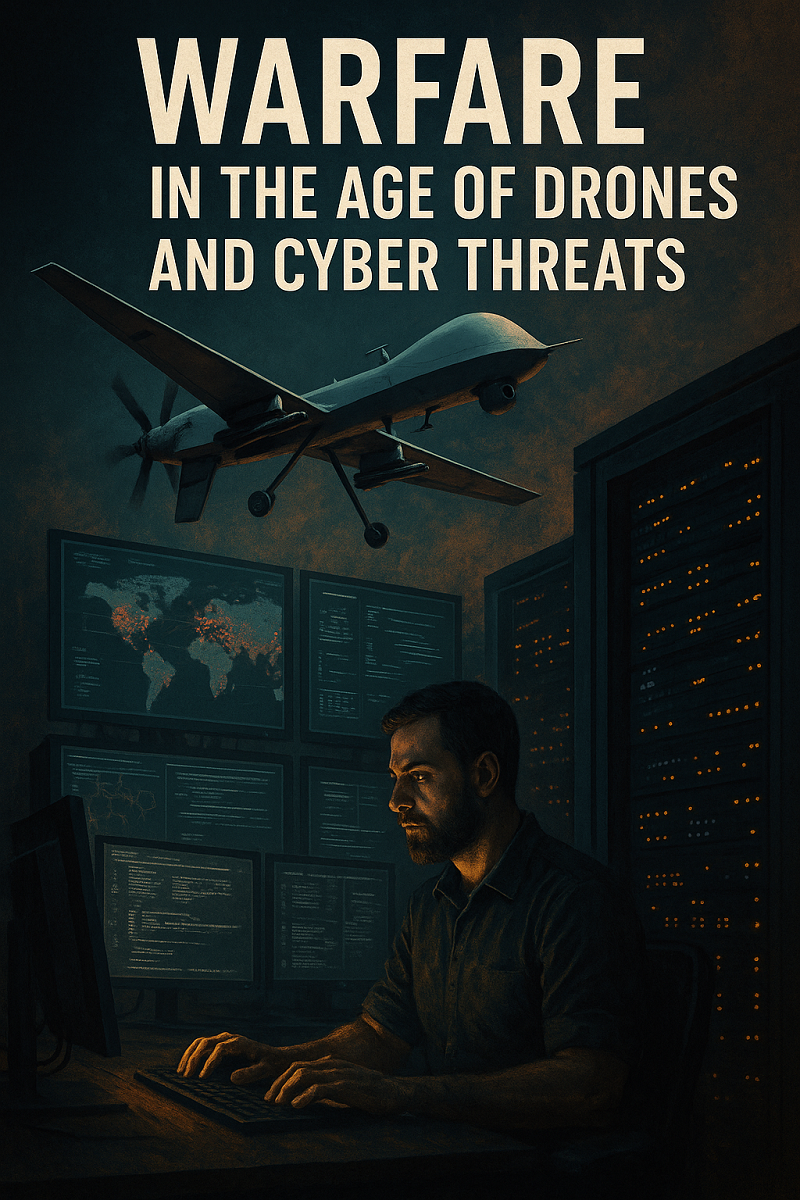I remember when war was something we imagined through stories of tanks, uniforms, and frontline courage. But today, when I hear about conflict, I picture silent machines in the sky, blinking servers in control rooms, and commands being typed rather than shouted. The face of warfare has changed, and with operations like Operation Sindoor, this shift feels closer than ever.
Earlier this year, drones were intercepted in Jammu carrying weapons and narcotics across the border. Just days ago, authorities reported drone activity near sensitive installations in Punjab. These incidents are not isolated. They are reminders that war no longer always comes with noise—it often arrives quietly, through signals and networks.
Drones today are not just flying cameras. They are eyes, messengers, and in some cases, weapons. During the Ukraine conflict, low-cost drones were used to damage critical infrastructure. Even commercial drones were modified for military use. In India, we are beginning to see similar patterns emerge along our borders. Drones are used for surveillance, dropping payloads, and sending coded messages. They bring efficiency but also introduce a new layer of vulnerability.
I used to wonder why we were told to switch off lights during alerts. Now I understand it is not just about visibility. It is about electromagnetic silence, making it harder for machines to locate targets. One light left on could mean a traceable signal. One mistake could mean disaster.
This brings me to the invisible front—the cyber realm. Last year, India faced multiple cyber intrusion attempts on power grids and railway systems, believed to be orchestrated by foreign actors. These are quiet attacks, but their impact could be catastrophic. Data is now a weapon, and our defense must include digital warriors who understand how to protect it.
The changing face of warfare has shown us that conflicts today don’t just involve soldiers and borders—they affect ordinary people, everyday systems, and the very backbone of a nation’s infrastructure. One thing I’ve come to realise from observing recent wars is how vital civilian preparedness has become; in several countries, civilians are now being trained to respond to drone threats and cyber disruptions. I believe it’s time we took similar steps. We need dedicated programmes to equip key sectors—especially those linked to infrastructure and logistics—with the knowledge to detect and report suspicious activity. But awareness alone won’t suffice. We must invest in proper surveillance systems, well-positioned monitoring units, and dependable cybersecurity frameworks supported by the right kind of software. These tools act as our modern-day sentinels, and to build them, we need more than intent—we need a clear budget and strategic backing. Without proper funding, even the best ideas can’t take flight. More than ever, what we need is the determination to do better, expert minds to chart the way forward, and the right equipment to safeguard our future. Strength still matters, but now it must be matched by intelligence, innovation, and a national will to adapt.
We need regular security drills, cybersecurity audits, and a national mindset shift. Understanding technology is no longer optional. It is critical. Field Marshal Sam Manekshaw once said, “India cannot be defeated in a war. We may lose battles, but we will never lose wars.” His words still ring true, but the nature of battle has evolved. Our response must evolve with it. We cannot only rely on strength. We must rely on knowledge, readiness, and the people who defend not just borders but also firewalls.






